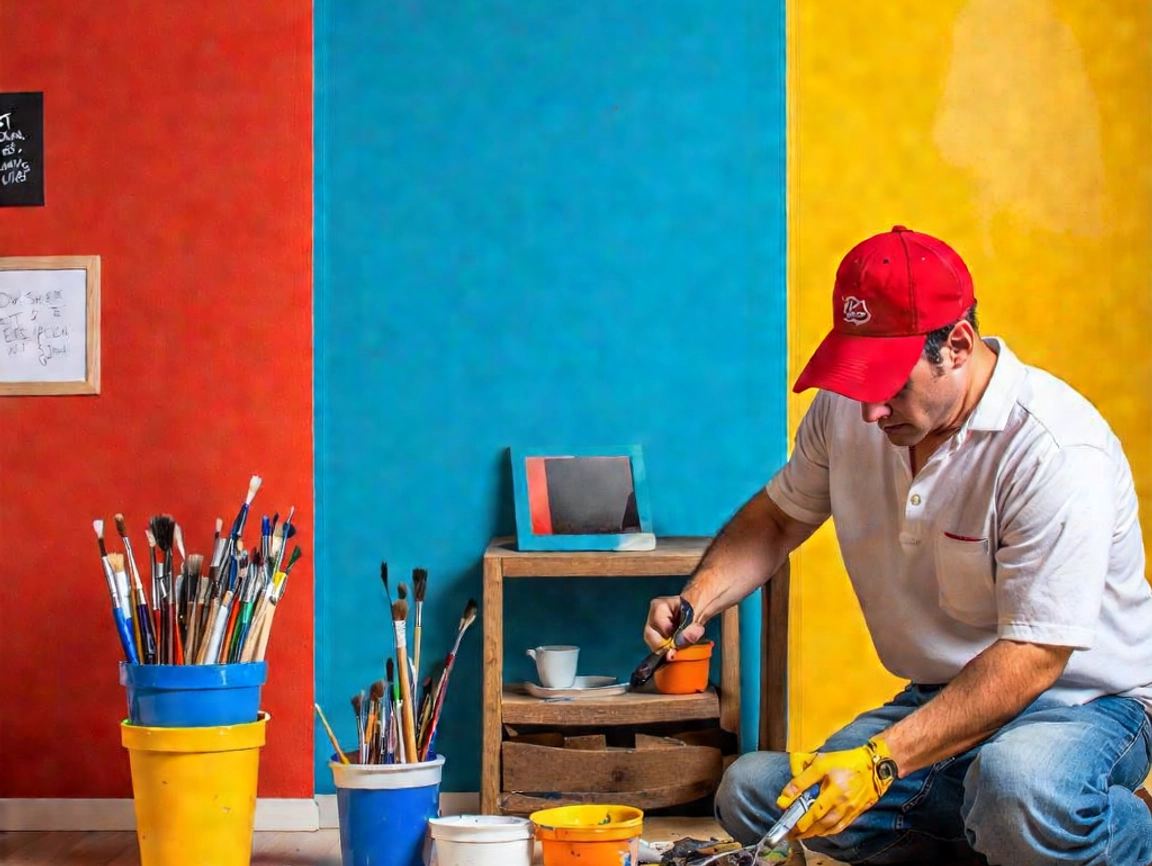
10 Game-Changing Housekeeping Secrets Pros Don’t Want You to Know
Professional housekeepers guard their most effective tricks, but these 10 game-changing housekeeping secrets will transform how you clean your home. If you’re tired of spending hours scrubbing with mediocre results, these insider techniques will help you achieve spotless rooms faster than you ever thought possible.
This guide is perfect for busy homeowners, working parents, and anyone who wants a cleaner home without the stress and time commitment of traditional cleaning methods. You’ll discover proven strategies that professional cleaners use to maximize their efficiency and deliver exceptional results for their clients.
You’ll learn how to clean from top to bottom for maximum efficiency, saving you from re-cleaning surfaces you’ve already tackled. We’ll also reveal how everyday items like ice cubes and dryer sheets can become powerful cleaning tools that cost pennies compared to expensive specialty products. Plus, you’ll master time-saving methods like the 15-minute room reset that can completely transform any space in just minutes.
Get ready to revolutionize your cleaning routine with these professional-grade techniques that will cut your cleaning time in half while delivering better results than ever before.
Clean From Top to Bottom for Maximum Efficiency

Start with ceiling fans and light fixtures to catch falling dust
Professional housekeepers know that gravity is either your best friend or worst enemy, depending on your cleaning strategy. When you dust a ceiling fan after mopping the floor, you’re essentially undoing half your work. Starting at the highest points in your room means every speck of dust, cobweb, and debris falls onto surfaces you haven’t cleaned yet.
Begin with ceiling fans using an extendable duster or a pillowcase slipped over each blade. The pillowcase trick keeps dust trapped instead of scattering it around the room. Light fixtures need attention too – dust buildup can reduce brightness by up to 30%. For chandeliers and pendant lights, spray a lint-free cloth with glass cleaner rather than spraying directly onto the fixture to avoid electrical issues.
Don’t forget air vents, crown molding, and the tops of tall furniture pieces. These areas collect surprising amounts of dust that becomes airborne the moment you start cleaning lower surfaces.
Work your way down to furniture surfaces and electronics
Once you’ve tackled the ceiling level, move systematically downward to furniture surfaces. This middle zone requires different techniques for different materials. Wood surfaces benefit from microfiber cloths slightly dampened with appropriate wood cleaner, while glass and metal surfaces shine best with streak-free formulas.
Electronics demand special care – never spray cleaners directly onto screens or keyboards. Instead, use specialized electronic wipes or a barely damp microfiber cloth. Unplug devices when possible and pay attention to vents where dust accumulates and affects performance.
Coffee tables, nightstands, and dressers should be cleared completely before cleaning. This gives you access to the entire surface and prevents you from simply moving dust around items. Clean underneath decorative objects and lamp bases – these spots are dust magnets that get overlooked in quick cleanings.
Save floor cleaning for last to capture all settled debris
Floors act as the final catch-all for everything that falls during your top-to-bottom cleaning session. By saving this step for last, you’re ensuring that every bit of dust, hair, and debris from higher surfaces gets properly removed instead of redistributed.
Start with dry removal – sweeping, vacuuming, or dust mopping depending on your floor type. This picks up the loose debris that settled during your earlier cleaning efforts. For hard floors, a thorough vacuum with appropriate attachments often works better than sweeping, as it captures fine dust that brooms tend to push around.
| Floor Type | Best Cleaning Order | Pro Tip |
|---|---|---|
| Hardwood | Vacuum → Damp mop | Use wood-specific cleaners to avoid damage |
| Tile | Sweep → Mop with appropriate cleaner | Pay extra attention to grout lines |
| Carpet | Vacuum thoroughly in multiple directions | Use carpet powder for extra freshness |
| Laminate | Dry mop → Barely damp mop | Excess water can cause warping |
This methodical approach cuts your cleaning time significantly because you’re not re-cleaning surfaces that get dirty from work happening above them.
Use Ice Cubes to Remove Carpet Dents and Stains

Place ice cubes on furniture indentations to restore carpet fibers
Heavy furniture can leave stubborn dents in your carpet that seem impossible to fix. Professional cleaners know that ice cubes are the secret weapon for bringing flattened carpet fibers back to life. The science behind this trick is simple: as ice melts slowly, the gradual moisture penetration helps carpet fibers relax and return to their original position.
Start by placing several ice cubes directly on the indented area, making sure to cover the entire dent. The number of ice cubes depends on the size of the indentation – typically 2-4 cubes work for most furniture marks. Allow the ice to melt completely, which usually takes 4-6 hours or overnight for deeper dents.
Once the ice has melted and the carpet feels damp to the touch, use a fork or your fingers to gently fluff the fibers upward. Work in different directions to encourage the fibers to stand up naturally. For particularly stubborn dents, you might need to repeat the process once more. The key is patience – rushing this process by using hot water or excessive force can damage the carpet fibers permanently.
Freeze gum or wax spills before scraping them off
Sticky substances like chewing gum, candle wax, or even stubborn adhesive residue become brittle when frozen, making removal significantly easier than trying to scrape them off while they’re soft and pliable. This method prevents the sticky material from spreading deeper into carpet fibers or fabric.
Place ice cubes in a sealed plastic bag to prevent water damage, then hold it against the gum or wax for 10-15 minutes. The cold temperature hardens the substance, transforming it from a gooey mess into something that chips off cleanly. For carpet applications, you can place ice cubes directly on the affected area if water won’t damage the surrounding fibers.
Once the material is thoroughly frozen, use a butter knife or plastic scraper to gently chip away at the hardened substance. Work from the outside edges toward the center to avoid pushing the material deeper. After removing the bulk of the substance, any remaining residue can usually be cleaned with a standard carpet cleaner or dish soap solution.
Apply ice to blood stains before treating with cold water
Fresh blood stains respond dramatically better to cold treatment than warm water, which actually sets the proteins and makes the stain permanent. Ice cubes serve a dual purpose here: they keep the stain cold while preventing it from spreading further into the fabric.
Immediately place ice cubes on the blood stain to prevent the proteins from coagulating. The cold temperature slows down the chemical processes that make blood stains so difficult to remove. Keep the ice on the stain for several minutes while you prepare your cleaning solution.
After the initial ice treatment, rinse the area with cold water, working from the outside of the stain toward the center. Never use hot water on blood stains, as heat will cook the proteins and create a permanent mark. For older blood stains, the ice cube method can still help, but you’ll need to combine it with enzyme-based cleaners that break down the protein structures that have already formed.
Transform Dryer Sheets Into Multi-Purpose Cleaning Tools

Remove soap scum from shower doors with used dryer sheets
Used dryer sheets pack a surprising punch against stubborn soap scum buildup on glass shower doors. The anti-static properties and conditioning agents in dryer sheets work like magic to break down the mineral deposits and soap residue that make your shower doors look cloudy and dirty. Simply grab a used dryer sheet from your laundry room and dampen it slightly with warm water. Gently scrub the glass surface in circular motions, paying extra attention to areas with heavy buildup. The fabric softener residue creates a protective barrier that repels water spots and makes future cleaning easier. This method works equally well on chrome fixtures, leaving them streak-free and shiny without harsh chemicals.
Dust baseboards and blinds without leaving residue
Dryer sheets excel at capturing dust thanks to their anti-static charge, making them perfect for cleaning surfaces that typically require multiple passes with traditional dusters. Run a fresh or used dryer sheet along baseboards, and watch how it attracts dust particles instead of just pushing them around. For venetian blinds, close the slats and wipe each section thoroughly, then flip and repeat on the other side. The anti-static coating left behind actually repels future dust accumulation, meaning you’ll clean these surfaces less frequently. This technique works especially well on electronics, computer screens, and TV stands where dust tends to cling stubbornly.
Eliminate pet hair from upholstery and clothing
Pet owners know the struggle of removing stubborn hair from furniture and clothes. Dryer sheets create an anti-static field that loosens pet hair from fabric fibers, making removal effortless. Lightly rub a dryer sheet across upholstered furniture, car seats, or clothing in one direction. The hair will lift away and stick to the sheet instead of embedding deeper into the fabric. For heavily affected areas, dampen the dryer sheet slightly for enhanced effectiveness. This method works on all fabric types and won’t damage delicate materials like silk or wool. Keep a few dryer sheets in your car for quick touch-ups before important meetings or social events.
Freshen drawers and closets naturally
Transform musty drawers and stale closets with strategically placed dryer sheets. Tuck them into dresser drawers, hang them on closet rods, or tape them inside storage boxes for long-lasting freshness. Unlike commercial air fresheners that can be overpowering, dryer sheets provide subtle, clean scents that won’t compete with perfumes or colognes. Replace them every 4-6 weeks for optimal effectiveness. For gym bags, luggage, or storage containers, place a dryer sheet inside before closing to prevent odors from developing during storage periods. This trick works particularly well in linen closets, keeping towels and sheets smelling fresh between uses.
Master the 15-Minute Room Reset Method

Set a Timer and Tackle One Room Completely
The magic of the 15-minute room reset lies in its focused intensity. When you set that timer, you’re creating urgency that prevents procrastination and overthinking. Choose one room at a time—never attempt multiple spaces during a single session. Professional housekeepers know that scattered attention leads to half-finished jobs and mounting frustration.
Start with the room that bothers you most or gets the heaviest daily use. Kitchens and living rooms typically offer the biggest visual impact for your effort. The timer creates psychological pressure that actually works in your favor, forcing quick decisions without getting bogged down in sentimental attachments to clutter.
Sort Items Into Keep, Relocate, and Discard Piles
Create three distinct zones in your chosen room before the timer starts. Designate a corner or use three boxes labeled clearly: Keep, Relocate, and Discard. This system eliminates the mental back-and-forth that wastes precious minutes.
Keep pile: Items that belong in this specific room and serve a current purpose. Be ruthless here—if you haven’t used something in six months, question whether it truly belongs in your daily space.
Relocate pile: Objects that have wandered from their proper homes. Books from other rooms, dishes from the kitchen, clothes that belong in closets. These items aren’t trash, but they’re creating visual chaos where they don’t belong.
Discard pile: Broken items, expired products, and things you genuinely no longer need. Don’t overthink this category—trust your gut reaction when you pick up each item.
Put Everything Back in Its Designated Place
Once sorting is complete, tackle the “keep” pile first. Every item needs a specific home, not just a general area. Professional organizers call this “like with like” storage—all pens go in one drawer divider, all remote controls share one basket, all magazines stack in one designated spot.
Work systematically around the room rather than bouncing randomly between areas. Start at the door and move clockwise, or tackle surfaces from left to right. This methodical approach prevents you from missing spots or double-handling items.
For the relocate pile, grab a basket or box and make one efficient trip through the house. Don’t get distracted by organizing other rooms—simply deposit items in their correct spaces and return to your original room.
Do a Final Visual Sweep for Missed Items
The last two minutes of your timer are crucial for catching details that make the difference between “clean enough” and “professionally reset.” Stand in the doorway and scan the room like a camera, looking for items that don’t belong or surfaces that need a quick wipe.
Check common trouble spots that people miss: behind doors, under furniture edges, on top of tall surfaces, and inside open containers. Look for visual distractions like crooked picture frames, messy cords, or surfaces that need a quick dust.
This final sweep also lets you appreciate what you’ve accomplished in just 15 minutes. The dramatic transformation reinforces the habit and motivates you to maintain the system daily.
Harness the Power of Steam for Chemical-Free Cleaning

Use a clothes steamer to sanitize mattresses and pillows
Steam cleaning offers one of the most effective ways to eliminate dust mites, bacteria, and odors from your bedding without introducing harmful chemicals into your sleep environment. Hold your clothes steamer about 6 inches from the mattress surface and move it slowly across the entire area, paying special attention to seams and corners where dust mites typically congregate.
The high temperature steam penetrates deep into fabric fibers, killing 99.9% of common household allergens and bacteria at temperatures above 160°F. For pillows, work systematically from one side to the other, allowing each section to dry completely before moving on. This method works particularly well for memory foam and synthetic materials that can’t be machine washed.
After steaming, sprinkle baking soda over the damp surface and let it sit for 30 minutes to absorb any remaining moisture and odors. Vacuum thoroughly before replacing sheets. Professional cleaners charge $100-200 for mattress sanitization, but your household steamer accomplishes the same results for pennies.
Remove wallpaper and sticky residue effortlessly
Traditional wallpaper removal involves expensive chemical strippers and hours of scraping, but steam makes this tedious job surprisingly manageable. Start by scoring the wallpaper surface with a utility knife, creating small perforations every few inches to allow steam penetration.
Hold your steamer against the wallpaper for 30-45 seconds until the adhesive softens, then gently peel away sections using a putty knife. The steam loosens decades-old paste without damaging the underlying drywall. Work in small sections to maintain optimal steam temperature and prevent the adhesive from re-hardening.
For stubborn sticky residue left behind by labels, stickers, or tape, direct steam application dissolves the bonds instantly. This technique works on glass, metal, plastic, and painted surfaces without leaving scratches or chemical residue. Keep a clean cloth handy to wipe away loosened adhesive immediately while it’s still warm and pliable.
Clean grout lines without harsh scrubbing
Grout cleaning typically requires bleach-based products and aggressive scrubbing that can damage both the grout and surrounding tiles. Steam provides a gentler yet more effective alternative that penetrates porous grout surfaces to lift embedded dirt and mildew.
Use a steam cleaner with a narrow nozzle attachment to direct concentrated heat into grout lines. The superheated water vapor breaks down soap scum, mold, and built-up grime at the molecular level. Move slowly along each line, allowing the steam to do the heavy lifting rather than relying on elbow grease.
Follow up with a clean, damp microfiber cloth to remove loosened debris. For heavily stained grout, apply a paste of baking soda and water before steaming for enhanced cleaning power. This chemical-free method restores grout to its original color while eliminating harmful fumes that traditional cleaners release into your home’s air.
Create Powerful Cleaning Solutions From Kitchen Staples

Mix Baking Soda and Dish Soap for Stubborn Stain Removal
Professional cleaners swear by this powerful combination that costs pennies to make. Baking soda acts as a gentle abrasive while dish soap breaks down grease and grime. For the perfect paste, mix three parts baking soda with one part dish soap until you get a spreadable consistency.
This mixture works wonders on bathtub rings, oven spills, and even permanent marker stains on walls. Apply the paste generously to the stain, let it sit for 10-15 minutes, then scrub with an old toothbrush or sponge. The baking soda lifts the stain while the soap dissolves oils and sticky residues.
For extra tough stains, add a few drops of hydrogen peroxide to create a foaming action that penetrates deeper. Store any leftover mixture in a sealed container for up to a week, though it works best when freshly mixed.
Use White Vinegar and Dawn for Glass Streak-Free Cleaning
Skip expensive glass cleaners and mix equal parts white vinegar and Dawn dish soap with two parts warm water. This combination cuts through fingerprints, water spots, and soap scum without leaving streaks.
The secret lies in Dawn’s degreasing power combined with vinegar’s ability to dissolve mineral deposits. Spray the solution on glass surfaces and wipe with a microfiber cloth in circular motions, finishing with vertical strokes for a crystal-clear result.
This mixture also works brilliantly on shower doors, mirrors, and even car windshields. Add the solution to a spray bottle and shake well before each use, as the ingredients tend to separate.
Combine Lemon Juice and Salt for Natural Bleaching Power
Fresh lemon juice mixed with coarse salt creates a natural bleaching paste that rivals commercial products. The citric acid in lemons naturally lightens stains while salt provides gentle scrubbing action.
This combo excels at removing rust stains from fixtures, whitening grout, and brightening cutting boards. Make a thick paste using the juice of one lemon with two tablespoons of salt. Rub the mixture onto the stained area and let it work for 15-20 minutes before rinsing.
For copper and brass items, this paste removes tarnish and restores shine without harsh chemicals. The natural oils in lemon peels also leave surfaces smelling fresh and clean.
Apply Club Soda to Fresh Carpet Spills for Instant Lifting
Club soda’s carbonation creates bubbling action that lifts spills from carpet fibers before they set in. The key is acting fast – pour club soda directly onto fresh spills while they’re still wet.
The carbon dioxide bubbles work like tiny scrub brushes, pushing liquid up and out of carpet fibers. Blot with a clean cloth, working from the outside of the spill inward to prevent spreading. Repeat until the cloth comes up clean.
This method works especially well on wine, juice, and coffee spills. Keep a bottle of club soda handy for emergencies, as it loses its fizz over time and becomes less effective.
Implement the One-Touch Rule for Clutter Control

Handle each item only once when organizing
Professional housekeepers swear by the one-touch rule because it prevents the endless shuffling of items that wastes precious time. When you pick up an object during your cleaning session, resist the urge to set it down somewhere else “temporarily.” This creates multiple touch points that multiply your work exponentially.
The moment your hands make contact with an item, your brain should instantly categorize it into one of three buckets: keep, donate, or trash. Train yourself to make this decision within five seconds. Hesitation leads to procrastination, which leads to piles of “maybe” items cluttering your space again.
Start small with this technique. Begin in your bathroom medicine cabinet or kitchen junk drawer. As you remove each item, immediately decide its fate and follow through with the appropriate action. Don’t create sorting piles on nearby surfaces – this defeats the entire purpose and creates more work later.
Make immediate decisions about keeping or discarding
Decision fatigue kills productivity faster than anything else in housekeeping. Professional organizers combat this by establishing clear criteria before they begin any decluttering session. Ask yourself these rapid-fire questions: Have I used this in the past year? Does it serve a current purpose in my life? Would I buy this again today?
Create a “maybe box” only as a last resort, and set a firm deadline for revisiting it – typically 30 days. If you haven’t retrieved anything from that box within the timeframe, donate the entire contents without opening it again. This psychological trick works because items you truly need will come to mind naturally within a month.
Speed up decision-making by tackling similar items in batches. Process all books together, all kitchen gadgets together, all clothing items together. Your brain develops a rhythm and criteria that makes each subsequent decision faster and more consistent.
Put items directly in their final destination
The magic happens when you eliminate intermediate stops. Instead of creating piles labeled “bedroom,” “garage,” or “donate,” walk each item directly to where it ultimately belongs. This approach prevents the dreaded “pile migration” where sorted items get mixed up again or forgotten entirely.
Equip yourself with the right tools to make this efficient. Use a donation bag that travels with you, keep a small trash can nearby, and have a laundry basket for items that belong in other rooms. When the basket fills up, take a quick trip to distribute everything before continuing.
Professional cleaners often use the “one room at a time” method combined with the one-touch rule. They completely finish one space before moving to the next, ensuring items find their permanent homes immediately. This prevents the overwhelming feeling of having multiple partially-organized rooms that still look messy.
Set up designated homes for frequently displaced items before you begin organizing. Mail, keys, charging cables, and hair accessories need specific spots that everyone in the household knows and respects. When everything has a place, putting items in their final destination becomes automatic rather than a decision-making burden.
Use Microfiber Cloths to Cut Cleaning Time in Half

Clean windows and mirrors without paper towels or chemicals
Professional cleaners swear by microfiber cloths for achieving crystal-clear windows and mirrors without spending money on expensive glass cleaners or wasting rolls of paper towels. The secret lies in microfiber’s unique structure – each fiber is split into wedge-shaped segments that are 100 times thinner than human hair, creating millions of tiny hooks that grab and hold dirt particles.
Start with a barely damp microfiber cloth to remove initial grime and fingerprints. Follow up with a completely dry microfiber cloth to buff away any remaining streaks. The key is using minimal water – too much moisture creates the very streaks you’re trying to avoid. For heavily soiled glass, spray plain water onto the surface first, then wipe with your damp cloth in straight lines rather than circular motions.
This technique works because microfiber naturally creates static electricity as you clean, which attracts dust and particles like a magnet. Professional window cleaners often keep separate cloths designated specifically for glass cleaning to prevent cross-contamination from other surfaces.
Dust furniture and electronics without spreading particles around
Traditional dusting methods with feather dusters or regular cloths simply move dust from one surface to another. Microfiber cloths actually trap and hold dust particles within their fibers, preventing the annoying dust clouds that settle elsewhere in your room minutes after cleaning.
For wooden furniture, use a dry microfiber cloth in long, smooth strokes following the wood grain. The cloth’s electrostatic properties will pull dust, pet hair, and debris directly into the fabric. For electronics like TV screens, computer monitors, and gaming consoles, microfiber is safe because it won’t scratch delicate surfaces while effectively removing fingerprints and dust buildup.
Professional housekeepers fold their microfiber cloths into quarters, creating multiple clean surfaces for one cleaning session. When one section becomes saturated with dust, simply refold to expose a fresh surface. This technique allows you to dust an entire room with a single cloth while maintaining maximum cleaning efficiency.
Sanitize bathroom surfaces with just water
Microfiber’s cleaning power is so effective that many professional cleaners use only water for most bathroom surfaces, eliminating the need for harsh chemicals. The microscopic fibers physically remove bacteria, soap scum, and grime through mechanical action rather than chemical dissolution.
For daily bathroom maintenance, keep a designated microfiber cloth slightly damp for wiping down sinks, faucets, and countertops. The cloth removes toothpaste splatters, soap residue, and water spots without leaving lint or streaks behind. For shower doors and tile, use horizontal strokes on glass and follow grout lines when cleaning tile surfaces.
The antimicrobial properties of quality microfiber cloths mean they naturally resist harboring bacteria when properly maintained. Rinse your bathroom microfiber cloth thoroughly after each use and wash it regularly in hot water without fabric softener, which can clog the fibers and reduce their effectiveness.
Polish stainless steel appliances to a streak-free shine
Achieving that showroom shine on stainless steel appliances becomes effortless with the right microfiber technique. Professional kitchen cleaners prefer this method over commercial stainless steel cleaners because it’s faster, cheaper, and produces superior results without chemical residue.
Begin with a slightly damp microfiber cloth to remove fingerprints, water spots, and light stains. Always wipe in the direction of the steel’s grain – this prevents micro-scratches and ensures an even finish. Follow immediately with a dry microfiber cloth, using firm pressure and long strokes to achieve that professional polish.
For heavily marked appliances, create a paste with baking soda and water, apply it with one microfiber cloth, then buff clean with a second dry cloth. This two-cloth system prevents redepositing grime and ensures each appliance maintains its pristine appearance longer than traditional cleaning methods.
Apply the Two-Minute Rule for Daily Maintenance

Complete any task that takes less than two minutes immediately
The two-minute rule transforms your entire approach to housekeeping by eliminating the mental burden of small, nagging tasks. When you spot something that needs attention – whether it’s putting away a book, wiping a spill, or hanging up a coat – ask yourself if it takes less than two minutes. If yes, do it right then and there.
This strategy prevents the dreaded pile-up effect where minor tasks accumulate into overwhelming cleaning sessions. Professional housekeepers swear by this method because it maintains baseline cleanliness without dedicated cleaning blocks. The key lies in recognizing these micro-tasks throughout your day: returning items to their designated spots, sorting mail as you retrieve it, or putting away shoes immediately after removing them.
Most people underestimate how quickly small tasks can be completed. Folding and putting away a load of towels? Ninety seconds. Wiping down kitchen appliances after cooking? Under two minutes. The psychological benefit extends beyond cleanliness – completing these quick wins creates momentum and reduces decision fatigue about when to tackle these chores later.
Make beds right after getting up
Making your bed within minutes of waking up sets a productive tone for the entire day while creating an instantly tidier bedroom. This simple habit takes less than sixty seconds but delivers outsized visual impact, making your bedroom look put-together regardless of other clutter.
Professional cleaning services prioritize bed-making because it’s the room’s focal point – a made bed can mask minor messiness elsewhere in the space. The practice also prevents the temptation to crawl back under covers, supporting better morning routines and sleep hygiene.
Wipe down bathroom counters after each use
Bathroom maintenance becomes effortless when you tackle water spots, toothpaste splatters, and soap residue immediately after use. Keep microfiber cloths or disinfecting wipes within arm’s reach of every sink to make this habit stick.
Daily counter maintenance prevents the buildup of soap scum and hard water stains that require harsh chemicals and serious scrubbing later. This approach keeps your bathroom guest-ready at all times while extending the life of your fixtures and surfaces.
Load dishes into dishwasher instead of leaving in sink
Dirty dishes left in the sink create visual chaos and attract pests while making food preparation more difficult. Loading dishes directly into the dishwasher – even if it’s not full – maintains kitchen functionality and prevents overwhelming cleanup sessions.
This habit eliminates the double-handling of dishes and reduces the likelihood of baked-on food that requires pre-scrubbing. When the dishwasher fills up, you’re already ahead of the game with clean counters and an organized kitchen workspace.
Rotate Seasonal Deep Cleaning to Prevent Overwhelming Buildup

Focus on different areas each quarter of the year
Breaking down your deep cleaning into seasonal chunks prevents that overwhelming feeling of tackling everything at once. Professional cleaners know that spreading tasks across the year keeps homes consistently fresh without burning out homeowners.
Create a simple quarterly schedule that works with your lifestyle and local climate. Spring naturally calls for clearing out winter’s stuffiness, while summer’s long days give you extra daylight for outdoor cleaning tasks. Fall becomes the perfect time to prep for cozy indoor months, and winter’s shorter days work well for organizing indoor spaces.
Here’s a practical quarterly breakdown that most professionals follow:
| Season | Focus Areas | Key Tasks |
|---|---|---|
| Spring | Air quality & freshening | Windows, carpets, air vents, outdoor spaces |
| Summer | Exterior & high-traffic areas | Decks, patios, garage, basement, appliances |
| Fall | Preparation & maintenance | Gutters, HVAC systems, outdoor furniture storage |
| Winter | Organization & indoor spaces | Closets, pantries, storage areas, deep decluttering |
The beauty of this system is flexibility. Miss a quarter? Simply adjust and catch up during the next season. The goal is consistency over perfection.
Deep clean carpets and upholstery during spring months
Spring offers the perfect conditions for carpet and upholstery cleaning. Lower humidity levels mean faster drying times, and open windows provide natural ventilation to speed the process.
Professional carpet cleaners book their busiest months during spring for good reason. Carpets have absorbed months of winter moisture, tracked-in salt, and indoor pollutants. Spring cleaning removes these accumulated contaminants before they become permanent damage.
Start with a thorough vacuuming using the crevice tool along baseboards and furniture edges. Pre-treat any visible spots with a mixture of white vinegar and water. For deep cleaning, rent a carpet cleaner or hire professionals – the investment pays off in extended carpet life.
Don’t forget upholstered furniture, which collects just as much dirt as carpets. Check manufacturer tags for cleaning codes: “W” means water-based cleaners are safe, “S” requires solvent-based products, and “WS” allows either method.
Time your carpet cleaning for a day when you can keep traffic off the surfaces for 6-8 hours. Place aluminum foil squares under furniture legs to prevent rust stains on damp carpet.
Organize closets and storage areas before winter
Smart homeowners tackle closet organization before cold weather arrives, not during spring cleaning when everyone else scrambles to declutter. This timing gives you a clear view of what you actually own before making winter clothing decisions.
Start by completely emptying each closet – yes, everything comes out. This reveals hidden items, forgotten purchases, and clothing that no longer fits your lifestyle. Sort everything into three piles: keep, donate, and trash.
Professional organizers recommend the “one-year rule” for clothing: if you haven’t worn it in a year, donate it. For seasonal items like holiday decorations or camping gear, check that everything still works and is worth storing.
Install proper storage solutions while closets are empty. Add shelving, hooks, or drawer organizers to maximize space. Clear storage bins work better than cardboard boxes – you can see contents without opening everything.
Create a simple inventory system for storage areas. Take photos of bin contents or keep a simple list taped to each container. This prevents the “what’s in this box?” frustration later.
Winter preparation also means checking that all stored items are clean and properly packed. Dirty items attract pests and develop odors over months of storage.

These ten professional housekeeping secrets can completely transform how you approach cleaning your home. Working from top to bottom saves you time and effort, while clever tricks like using ice cubes on carpets and repurposing dryer sheets help you tackle problems you never thought had easy solutions. The 15-minute room reset and two-minute daily rule prove that staying on top of your home doesn’t require marathon cleaning sessions – just smart, consistent habits.
The real game-changer is combining these techniques into your regular routine. Start with the one-touch rule and microfiber cloths this week, then gradually add steam cleaning and homemade solutions from your kitchen pantry. Your home will stay cleaner with less effort, and you’ll wonder why you ever spent entire weekends scrubbing when these simple professional methods were available all along. Pick two or three secrets that speak to you most and watch how quickly they become second nature.
img{
width:100%;
}
table, td, th {
border: 1px solid;
}
table {
width: 100%;
border-collapse: collapse;
}











